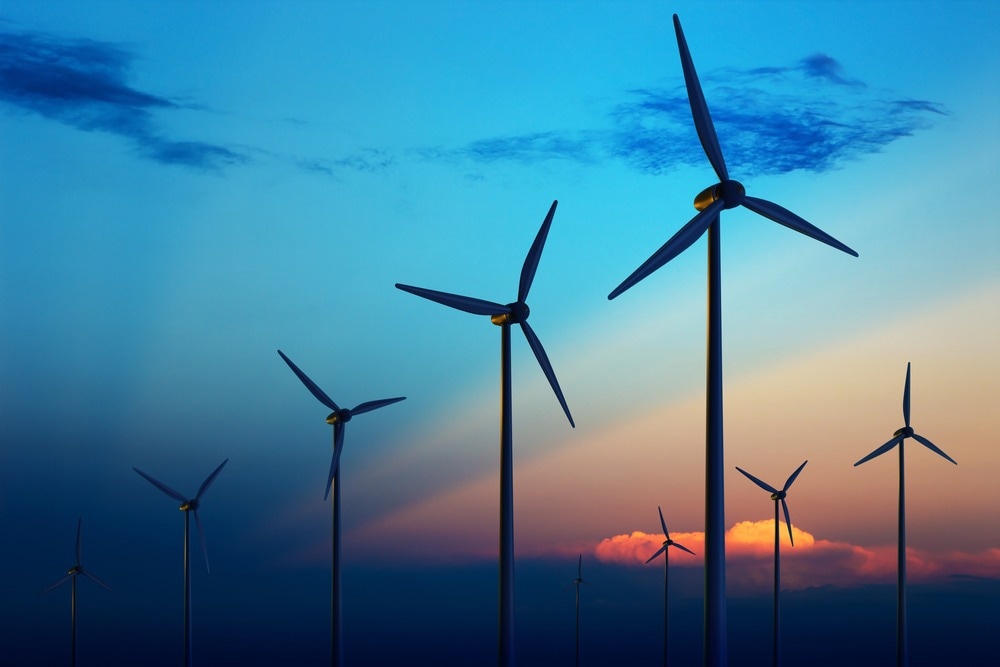The Biden-Harris Administration has announced its decision to use $30 million from President Biden’s Bipartisan Infrastructure Law to finance research and development initiatives that would reduce expenses for wind energy projects on land and offshore, benefiting communities across the country.

Image Credit: Johan Swanepoel/Shutterstock.com
Wind energy contributed to over 9% of total domestic electricity output in 2021 and will be critical in meeting President Biden’s targets of 100% renewable electricity by 2035 and a net-zero-emissions economy by 2050.
Wind power is abundant, homegrown, affordable, and already provides enough electricity to power 40 million homes. But that is just the start—wind power is poised for explosive growth. Thanks to President Biden’s Bipartisan Infrastructure Law, DOE is helping to break down technology barriers to turbo-charge the deployment of this affordable resource all across the country.
Jennifer M. Granholm, US Secretary of Energy
Along with the Inflation Reduction Act, which offers market certainty and benefits for domestic wind energy component manufacturing, these investments will support wind energy’s sustained expansion and strengthen its vital role as an American-made clean energy resource.
The investments also endorse the Biden-Harris Administration's initiatives to kickstart the American offshore wind and reach 30 gigawatts (GW) of offshore wind capacity by 2030, which would be sufficient to power 10 million homes with clean energy, assist tens of thousands of jobs, and encourage private investment up and down the supply chain.
Notice of Intent (NOI) to Issue Bipartisan Infrastructure Law Funding for the Reduction of Barriers to Offshore, Land-Based, and Distributed Wind Deployment
Applicants for the upcoming $28 million funding opportunity must present ideas that promote the objectives listed below:
- Developing the technologies required to transmit huge volumes of electricity generated by offshore wind over great distances.
This financial support ($9.7 million) will promote standards for high-voltage direct current (HVDC) transmission for offshore wind, create and substantiate innovative controls to guarantee trustworthiness and compatibility with alternating current and direct current, and determine and address shortfalls in education and workforce training to support HVDC transmission deployment for offshore wind in the United States.
- Assisting coastal communities in reaping the benefits of offshore wind development through social science research and community participation.
The $6.9 million in funding for this topic area will better quantify the economic and other implications of offshore wind development on local communities and promote research that will allow communities to effectively engage in and gain from offshore wind development.
- Enhancing permitting processes to enable distributed wind more accessible to communities where it can be deployed cost-effectively and fairly.
Distributed wind energy, or wind that powers neighboring homes, farms, schools, and businesses, can aid communities in their transition to low-carbon energy. But not all municipalities have implemented zoning and permitting processes for distributed wind, and some have costly regulations that impede growth.
To reduce costs and expedite the equitable deployment of community-based clean energy, financing in this area ($3.3 million) will support innovative zoning and authorizing approaches for distributed wind projects that influence permit reform successes for distributed solar photovoltaics and work for communities and industries alike.
- Developing technologies that assist bats in avoiding wind turbines as the sector seeks to reduce the industry's impact on local wildlife and ecosystems.
This topic’s funding ($8 million) will go toward bat behavioral research, technological development, and field testing to improve bat deterrent technologies.
Anchoring and Mooring Request for Information (RFI)
DOE issued an RFI on research needs for the anchoring and mooring systems that link floating offshore wind structures to the sea floor in deep water, in favor of the Floating Offshore Wind Energy Earthshot and to inform $2.5 million in future R&D supported by the Bipartisan Infrastructure Law.
The Biden-Harris Administration has set a target of constructing 15 GW of floating offshore wind by 2035, enough to power five million homes with sustainable energy, while encouraging state offshore wind deployment and expanding these economic outlooks.
The RFI information will inform future work supported by the Bipartisan Infrastructure Act to move floating offshore wind toward cost-effective commercialization and domestic production, including technology to keep floating turbines in place at sea.
These investments will supplement existing DOE work to facilitate the innovations required to develop US wind systems, lower electricity costs, and expedite wind power deployment.